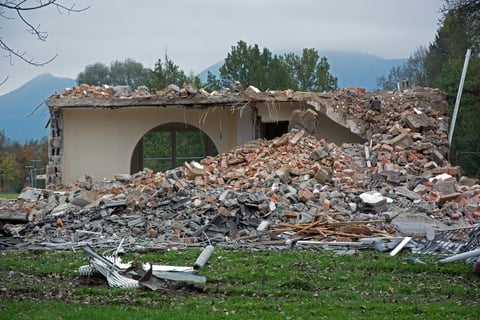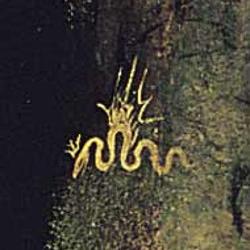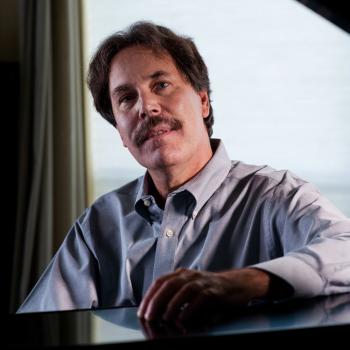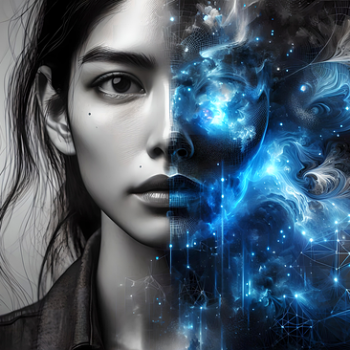As we have blogged about, a number of observers have been sensing a “vibe shift,” the impression that something new is in the air, that the culture is changing in a new direction.
Specifics of what that shift entails are harder to come by. Cultural critic Ted Gioia, though, is making more definite claims and is citing evidence to back up his observation. Yesterday we blogged about his theory that we are undergoing a cultural and intellectual change on the order of the Renaissance or the Enlightenment.
“We are experiencing a total shift—like the magnetic poles reversing,” he writes in the Free Press. “But it doesn’t even have a name—not yet. So let’s give it one. Let’s call it The Collapse of the Knowledge System.”
Now I would argue that “the Collapse of the Knowledge System” is not a very good name for a new civilization-wide movement, such as the Renaissance and the Enlightenment. He goes on to give evidence that the public has lost its trust in science, experts, and our educational institutions and for good reason.
But to say the old order is falling apart doesn’t tell us much about what comes next, though it can give us clues. That the medieval world picture collapsed tells us little about the positive nature of the Renaissance, that is, its rediscovery and new applications of classical antiquity. The Enlightenment was a rejection of the so-called “Dark Ages” of ignorance and superstition, but it also put forth the positive alternative of an “Age of Reason,” in which people of those days trusted the findings of rational inquiry and the newly flourishing science over and against the beliefs, including the religious beliefs, of the past.
So, if Gioia is right that our existing knowledge system is collapsing, what might we expect to come next?
Gioia himself says that he isn’t sure. But he thinks it will resemble what replaced the arid rationalism of the Enlightenment: Romanticism.
He sees a parallel with what happened at the apex of another age of technology, the Industrial Revolution. At the turn of the 19th century, Gioia writes,
Rationalist and algorithmic models were dominating every sphere of life at that midpoint in the Industrial Revolution—and people started resisting the forces of progress. . . .They celebrated human feeling and emotional attachments—embracing them as more trustworthy, more flexible, more desirable than technology, profits, and cold calculation.
This is from a separate essay entitled Notes Toward a New Romanticism, in which Gioia explores that possibility today.
I would say that today’s shift away from scientific rationalism that he chronicles already started with postmodernism and its reaction against modernism. Just as modernism had its beginnings in the Enlightenment and the authority of science, postmodernism arguably had its origins in a particular kind of Romanticism. Both are highly subjective and are opposed to objective reason. The exaltation of the “will to power” was first articulated by Nietzsche. The claim that our experience of reality is a “construction” of the human mind derives from Kant.
Postmodernism with its relativism, political reductionism, and constructivism can be said to have collapsed the knowledge system of modernism, especially once it came for science. This is part of what Gioia was seeing, and it is intrinsic to what has happened to universities and the public schools.
Science and technology are related, but they are not the same. “Science” comes from the Latin word for knowledge, having to do with discovering objective knowledge about the natural order. “Technology,” though it builds on scientific discoveries, is about making and using tools to force nature to do our bidding. As such, it is “constructivist.” So it is little wonder that postmodernists, while rejecting objective truth as scientists will never do, are quite enchanted with technology.
There were, however, other aspects of 19th century Romanticism that might be coming back. The “Enlightenment” thought that the past was all dark until the 18th century light of reason switched on. But the Romantics rediscovered and reappropriated the past. That this movement was called “Romantic” was not due to an emphasis on love; rather, it was a reference to the medieval stories called “romances.” These were often about what would be called “romantic love,” but they were also imaginative fantasies involving adventure, heroic deeds, and the supernatural. (Examples would include the King Arthur sagas and Fairy Tales.)
The romances became a literary influence, but they also led to a rediscovery of the Middle Ages. In the 19th century, wealthy industrialists built castles for themselves, modeled after medieval architecture. Churches were built modeled after medieval chapels and cathedrals. While Romanticism gave us highly subjective religion, it also gave us religion that drew on its past, as in the Anglo-Catholic movement in England and in the confessional revival among Lutherans. Instead of the Enlightenment project of recasting Christianity according to reason and reason alone, many 19th century Christians appreciated the mysteries of ancient Christian doctrines and liturgies, including a Sacramental revival.
Perhaps we are seeing glimpses of this shift in the popularity of the technology-satiated Generation Z in the Latin Mass and, more broadly, in liturgical worship.
Another contribution of Romanticism was nationalism, found among the German romantics in an idealization of folk culture and a love for German “blood and soil”–a nationalism that did not end well–though it arguably had more benign manifestations elsewhere in a new appreciation for communities and the necessity of a “rooted” life. We may see a new expression of this not only in MAGA patriotism but also in today’s localist movement.
As Christians, I don’t think we can expect any cultural shift to be in completely in our favor, necessarily. Overall, the Enlightenment was hostile to Christianity, and so was Romanticism, though for different and opposite reasons. Enlightenment thinkers found Christianity to be insufficiently reasonable and too subjective, while many Romantic thinkers found it to be too reasonable and not subjective enough. Yet the church thrived in both eras nevertheless.
Any new era might value spirituality, but in a New Age sense. A reaction against both modernism and postmodernism might go back as far as a premodern paganism. But it may well have room for a premodern Christianity.
What do you think might come next if our current “knowledge structure collapses”? What new worldviews might arise from the rubble? What would a new knowledge structure look like?
Photo by form PxHere via Picryl, Public Domain












